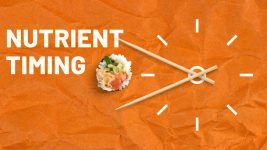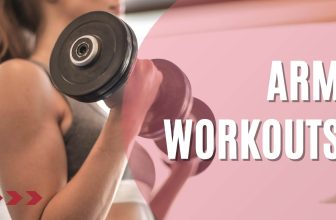Table of Contents
You need to have more than a passing interest in nutrition and be mindful of nutrient timing if you are serious about getting the most out of your workouts, increasing your fitness, or reducing weight as effectively as possible. The food you eat is the physical cornerstone of your prosperity. Come with WhichChoose to learn more about the subject at hand.
Eat For Your Goals
Ignoring your body’s need for the right nutrients could mean that your workouts fail to deliver any meaningful results. You’ll waste a lot of time and energy with nothing to show for it. Remember, you are what you eat! To get the results you truly deserve, you need to align your food intake to your workouts.
For example, if you want to lose weight, a low-calorie, low-carb, high-protein, and moderate-fat approach is best, while if you want to gain muscle, you generally need plenty of calories plus an abundance of protein.
However, once you have aligned your diet to your goals, there is one more thing you should consider if you want to optimize your progress – nutrient timing.
What Is Nutrient Timing?
Nutrient timing is the practice of eating certain foods at specific times of the day to make the most of your hormonal state and needs for energy. This method takes into account the fact that your body needs different amounts of nutrients depending on whether you’re about to exercise, have just finished exercising, or are recovering from exercise.
While it is possible to make progress by simply eating three square meals a day and a few healthy snacks in between, such an approach does not take into account how your body’s need for nutrients changes throughout the day. Nutrient timing, therefore, ensures your body gets exactly what it needs when it needs it.
While this might sound complicated, it’s simply a matter of adjusting your food intake around exercise. There are four main “windows of opportunity” for nutrient timing:
- Before exercise
- During exercise
- Immediately after exercise
- Recovering between workouts
Nutrient Timing – Before Exercise
Your workouts use energy. The more intense the workout, the more energy you need. Even though you can exercise on an empty stomach, doing so may slow your progress if your goal is to get stronger or run faster. If, however, you are exercising for fat loss, working out on an empty stomach can be beneficial.
Assuming you’re exercising to build more lean muscle mass, it is important to start your workout with full muscle glycogen (glucose) stores, so you have plenty of fuel for your workout. You also need an abundance of protein-derived amino acids to minimize muscle breakdown.
To do this, try to eat a well-balanced meal with protein, carbs, and healthy fats about two to three hours before you work out.
I prefer a full meal replacement shake with a good amount of protein and a good balance of macronutrients. This is a great choice if you exercise early in the morning or right after work because you can consume it 30 – 60 minutes before exercising.
Even if your main goal is fat loss, and you choose to perform your workouts in a fasted state, consuming branched-chain amino acids before exercise can help prevent unwanted muscle breakdown but will not interfere with fat loss. A high-quality whey protein shake will deliver the branched-chain amino acids your body needs.
As to exactly how much you should eat and when, the answer is dependent on how quickly you digest your food, your size, and your training goals. If you are trying to gain muscle or are training very intensely, a bigger pre-training meal is more appropriate. In contrast, if you want leaner gains or your workout is less intense, a lighter meal is more appropriate. Adjust the size of your pre-workout meal to match your nutritional and energy needs.
Nutrient Timing – During Exercise
Long, intense workouts can deplete your glycogen stores—glycogen being the glucose locked inside your muscles. When glycogen levels are depleted, you will start to feel fatigued, and your workout intensity will decline. This tends to happen if:
- You didn’t have a pre-exercise meal
- Your workout is especially long and/or intense
In these instances, it may be appropriate to consume fast-acting carbohydrates and protein during your workout to prevent fatigue and minimize muscle breakdown.
As, during exercise, blood is diverted away from the digestive system and toward the working muscles, nutrients consumed during a workout are best in liquid form (a sports drink or protein shake). Consuming solids during a workout can make you feel heavy in the gut.
If, however, your goal is fat loss, make sure you’re not over-consuming any sports drinks. They are loaded with sugar and will ultimately work against your goal of reducing unwanted fat.
Nutrient Timing – Immediately After Exercise
After exercise, your muscles are like dried-out sponges. Some, most, or almost all muscle glycogen will have been depleted. Exercising will also have also caused your muscles to break down. In other words, your muscles are desperately in need of repair.
To facilitate the speedy recovery from exercise, your sensitivity to the hormone insulin is elevated – insulin is responsible for ferrying nutrients into your cells. This means that almost all of the food you eat right after you work out will go to your muscles, where it will be used to help your muscles repair and recover faster.
Increased insulin sensitivity lasts for several hours after exercise, and to make the most of this phenomenon, your post-exercise meals should be the largest of the day and the most nutritionally dense.
Ideally, you should start the refueling process as soon after exercise as possible. A protein and carb smoothie is the ideal choice, but solids can work equally well if convenient. A second post-training meal is also advisable to make the most of your increased insulin sensitivity.
Post-training meals should consist of good quality protein such as fish, chicken, eggs, or lean beef, plus fast-acting carbohydrates (white rice, pasta, or potatoes). These foods are quickly and easily broken down, so they can be rapidly utilized by your muscles and liver. Avoid large amounts of fats during this meal, as fat can blunt insulin sensitivity.
Delaying your post-exercise meal can delay your recovery, so it is important to make the most of your increased sensitivity to insulin, which is arguably the most powerful anabolic hormone.
Nutrient Timing – Between Workouts
Insulin sensitivity declines after a few hours, as does your ability to effectively process large amounts of carbohydrates. In fact, once your carbohydrate needs are met, carbs are very easily converted to body fat.
For this reason, it makes sense to reduce your carb intake until your next pre-exercise meal. This doesn’t mean that zero carbs should be consumed, but you should avoid fast-acting carbs and over-consuming carbs. This rule applies whether you’re training for fat loss, muscle gain, or for improved performance.
Protein and healthy fats should be your nutritional priority between workouts, with carbs only serving as an accompaniment. The carbs consumed should be slow-acting and fibrous (vegetables, wild rice, legumes, and brown pasta).
Nutrient Timing – A Summary
We’ve gone over a lot of information, so here’s a summary to help you decide what you should eat and when to eat it to get the most out of nutrient timing:
– Pre-workout: Either consume a nutritionally balanced meal replacement shake with an adequate amount of protein 30-60 minutes before exercising or eat a healthy meal of carbs and protein 2-3 hours before exercising.
– During Workout: If your workout is intense or longer than an hour, consume protein and carbs in liquid form to prevent fatigue.
– Post-Workout: Consume fast-acting carbohydrates plus protein immediately after exercise to facilitate recovery.
– Between Workouts: Continue to consume protein and healthy fats, plus some fibrous carbs to promote the recovery process. Dial back on the fast-acting carbs to avoid gaining fat.
You will get the best results if you take the right nutrient timing around your workouts. In other words, it’s really just adjusting your food intake for what you’re about to do and what you’ve already done. When you time your nutrient intake around exercise, you’ll get exactly what you need. WhichChoose wishes you find this article helpful, and we hope you get the results you expect after every workout.
WhichChoose is the website products and services review that helps users in the world to find what the best is and shop easily.






